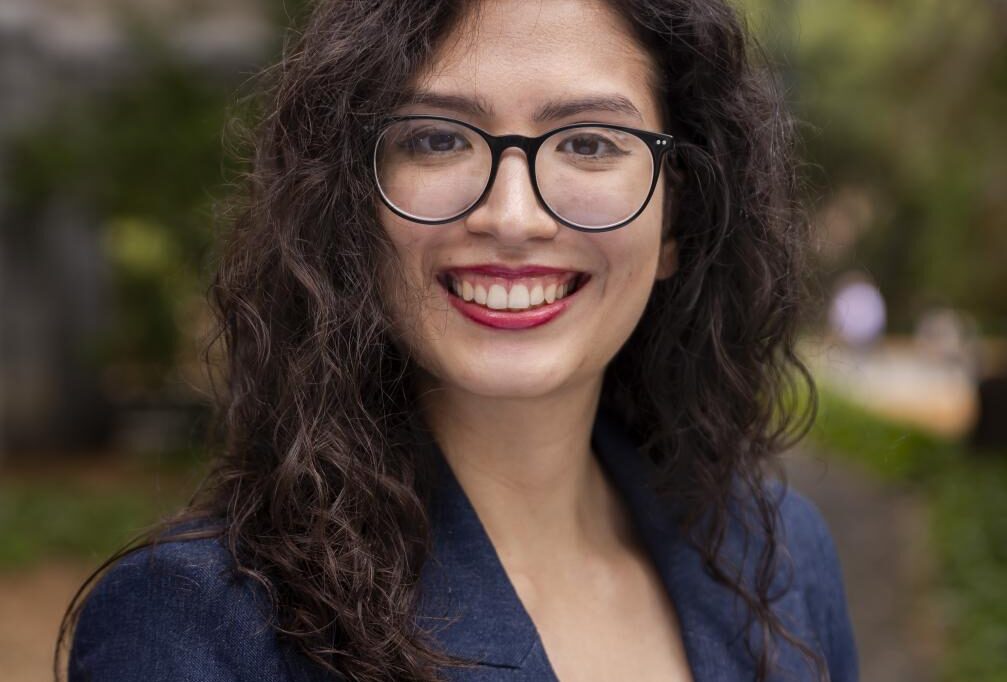CLTC and The Consortium of Cybersecurity Clinics are pleased to announce that Matthew Nagamine will serve as Membership Director, responsible for developing and implementing strategic priorities for the Consortium, onboarding and stewarding member clinics, and working with Consortium leadership to achieve its mission of launching a university, college, or community-college based clinic in all 50 U.S. states by 2030.

We sat down with Matt to learn more about his background, what he’s most looking forward to in his new role, and his vision for the Consortium.
Matt Nagamine has been CLTC’s Manager of Strategic Partnerships since 2018, where he has cultivated impactful relationships with key partners and allies to support CLTC’s programs. During his tenure Matt has managed multiple flagship projects including Cybersecurity Futures 2030 and CLTC’s Research Grants Program. In early 2021, Matt played a key role in getting the Consortium of Cybersecurity Clinics up and running. He researched and built the first backend systems for the Consortium, set-up monthly meetings, managed an RFP for Members, administered grants, and helped with the first Clinic of Clinics student networking event. Matt also co-led the creation and implementation of CLTC’s Diversity, Equity, Inclusion and Belonging strategic plan.
Matt earned his bachelor’s degree in Political Science with a minor in African American Studies from UC Berkeley, where he conducted research in Professor Nikki Jones’ Justice Interactions Lab, exploring the intersections of race, gender, and justice.
What attracted you to the Consortium’s mission?
What’s not to love? The Consortium’s purpose is to support a network of colleges and universities in building and growing cybersecurity clinics. These clinics educate and train students for the cybersecurity workforce while helping protect vulnerable organizations from cyber attacks. I was fortunate to contribute to the Consortium in 2018 by building the first back-end systems, setting up the first monthly meetings, facilitating an RFP that administered the Consortium’s first grants to members. Since then, I’ve had a front row seat observing how the Consortium has made clinics more effective by facilitating information sharing among members—and how making this knowledge accessible to others has significantly lowered the barriers for more universities to establish clinics of their own.
What will you be doing as Membership Director? What do you hope to achieve in the role?
In recent months, the Consortium has experienced a tremendous amount of growth, with new members in many states, major investments from funders, and increased visibility at the NICE cybersecurity conference and Cyber Civil Defense Summit. The Consortium now needs full-time support from someone who can provide leadership, structure, and organization for its members. As the Membership Director, I aim to drive both short- and long-term strategies that will significantly enhance the membership experience and the Consortium’s ability to support clinics in delivering high-quality training for students and services for their clients.
What aspects of the role most excite you?
I am most excited to meet, support, and work alongside this incredible group of cyber civil defenders. The Consortium and its members—an impressive and diverse network of academic institutions, including community colleges, Minority Serving Institutions (MSIs), tribal colleges, and international universities—are already doing amazing work. I’m fired up about helping these members become better connected and more effective through their membership.
Clinics are often championed for helping defend “civil society” and to grow and diversify the cyber workforce – why is this important, broadly, and to you personally?
This model addresses two major gaps in the cybersecurity field: 1) helping low-resource or otherwise vulnerable organizations that are providing crucial services to their communities to improve their cybersecurity posture with no-cost, direct assistance; and 2) equipping students, including many traditionally under-represented in the field of cybersecurity, with practical skills and real-world experiences that are transferable to the cybersecurity job market. Filling these gaps is crucial to achieving more secure and more equitable cybersecurity outcomes for everyone. I believe in and am excited to contribute to the grassroots, community-based approaches that Consortium members take to expand who participates in and has access to cybersecurity.
What’s something you want the Consortium of Cybersecurity Clinics community to know about you?
Last year, I led CLTC’s Cybersecurity Futures 2030 initiative, in partnership with the World Economic Forum’s Centre for Cybersecurity, which gathered global perspectives on how cybersecurity will evolve by 2030, providing decision-makers with strategic foresight to improve the decisions they make today. Through this work, I truly understood the importance of incorporating diverse perspectives to understand and solve issues. This experience reinforced my commitment to inclusive practices and to cybersecurity on a global scale.
What have you learned from working in the cybersecurity field that you’ll take with you?
Relationships and collaboration have been at the core of my work managing strategic partnerships at the UC Berkeley Center for Long-Term Cybersecurity (CLTC). I’ve learned that the most complex challenges in cybersecurity often can only be addressed through strong, trustworthy partnerships. I think this is true for Consortium members and the student and client communities they serve. These lessons will guide me in my role as Membership Director, helping to support our members and advance our mission.




